How To Make Frog And Toad Feeder Stations: Tips for a Thriving Habitat
Creating feeder stations for frogs and toads in your garden ca n be a simple and effective way to support these beneficial creatures.
Providing a consistent food source helps ensure their dietary needs are met, enhancing their health and well-being.
Additionally, setting up feeder stations can reduce pest populations, as frogs and toads are natural predators of many common garden pests.
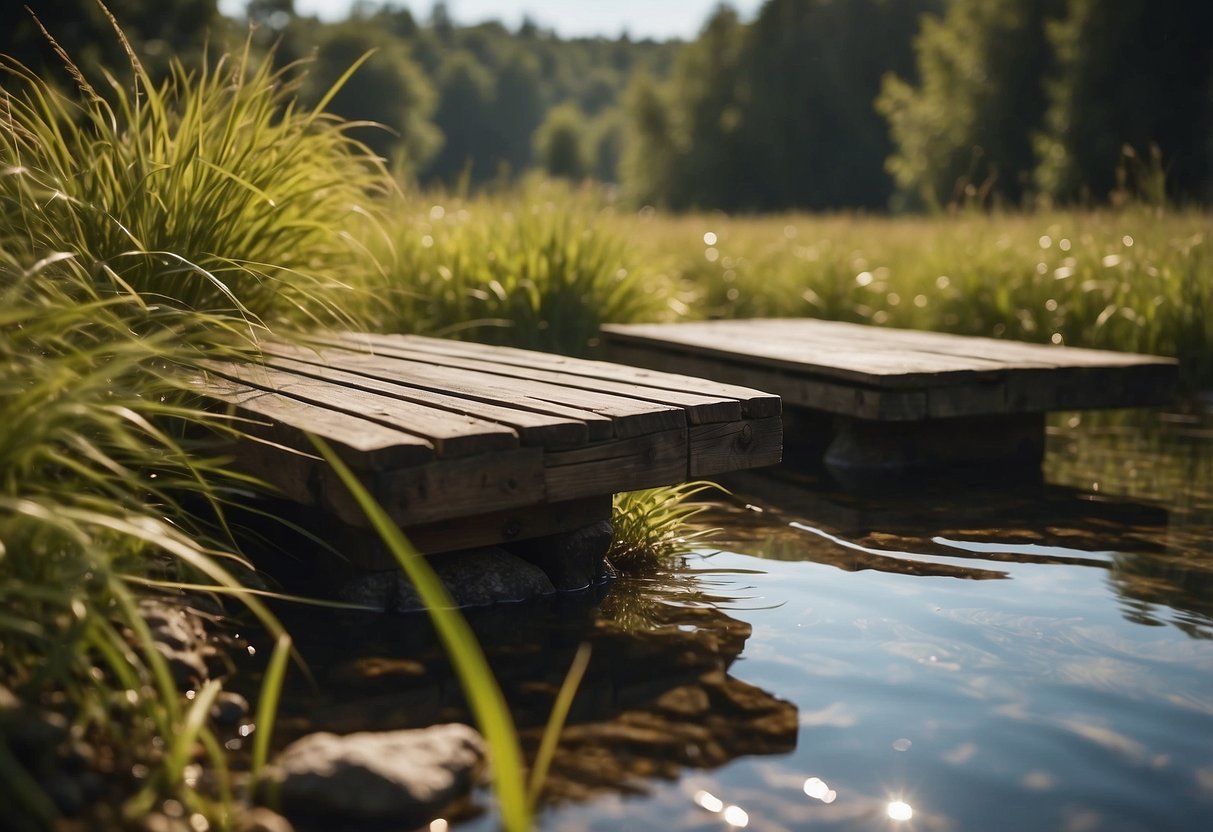
To begin, it’s essential to choose the right location for your feeder station.
A shady, secluded spot away from main foot traffic is ideal. This helps the amphibians feel safe while feeding.
In designing your feeder station, consider using shallow dishes or platforms that can hold a variety of foods like insects, worms, and specially formulated amphibian pellets.
Once your feeder station is set up, maintaining and cleaning it regularly ensures a healthy environment for your frog and toad visitors.
Keep an eye on the food supply and the surrounding area to prevent mold and pests.
By creating and managing a feeder station, you actively contribute to the health and safety of your local amphibian population.
Key Takeaways
- Provide a consistent food source to support frog and toad health.
- Choose a secluded, shady spot for the feeder station.
- Regular maintenance keeps the feeder station safe and hygienic.
Understanding Frog and Toad Dietary Needs
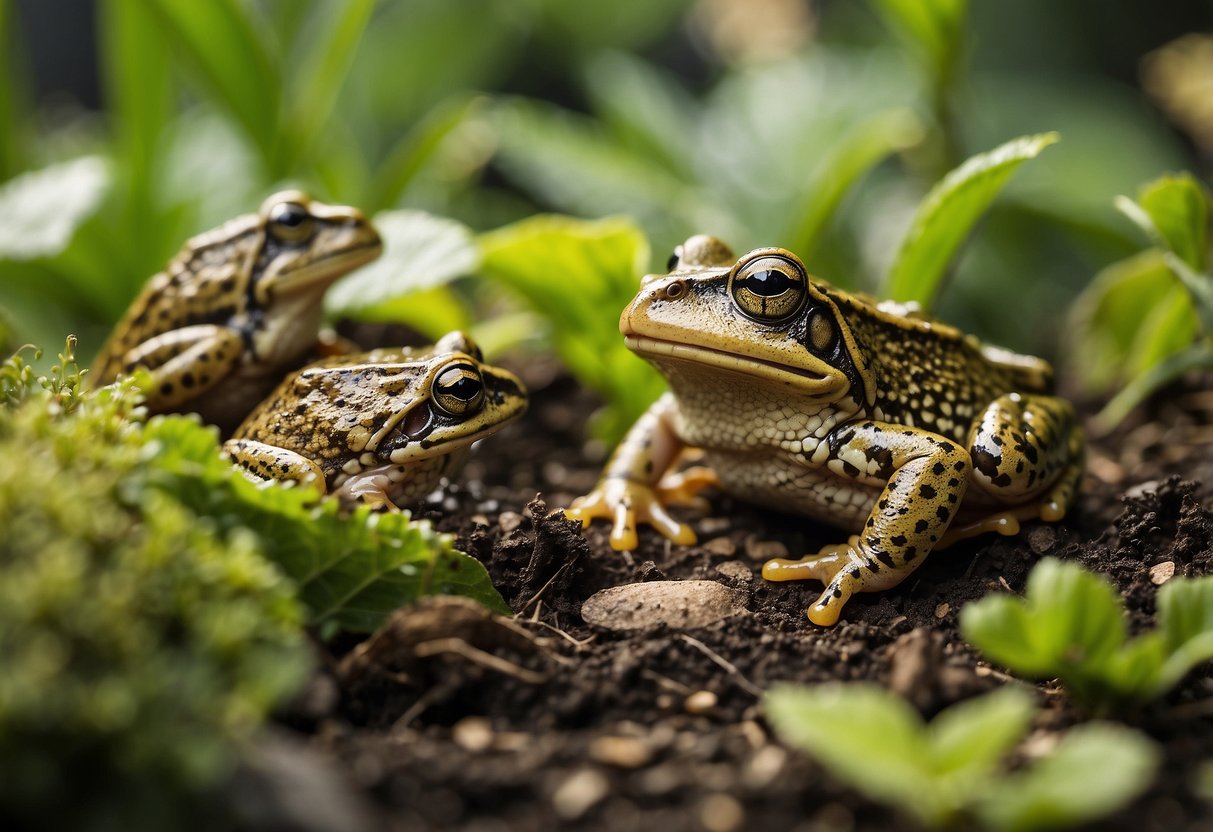
Frogs and toads have specific dietary needs that you should know about.
Both are primarily carnivorous.
Adult frogs usually eat crickets, worms, and small insects. Young toads and frogs have a similar diet but need to be fed more frequently.
Common Foods for Frogs and Toads
- Crickets: A staple food item.
- Worms: Earthworms, mealworms, etc.
- Small Insects: Flies, moths, etc.
Feeding Frequency
- Adult Frogs: Feed every 2-3 days.
- Baby Toads: Feed twice daily.
Be mindful of the portion sizes. Zoos and experienced hobbyists often use feeding tongs, especially for larger species like Pacman Frogs.
Treats and Snacks
While the main diet should be consistent, occasional treats can be added, such as:
- Blueberries: Rich in vitamins C and K.
- Peppers: Remove seeds and cut into small pieces.
Remember, a diverse diet is key. Mixing different foods helps ensure that your frogs and toads get all the nutrients they need.
Benefits of Having a Feeder Station
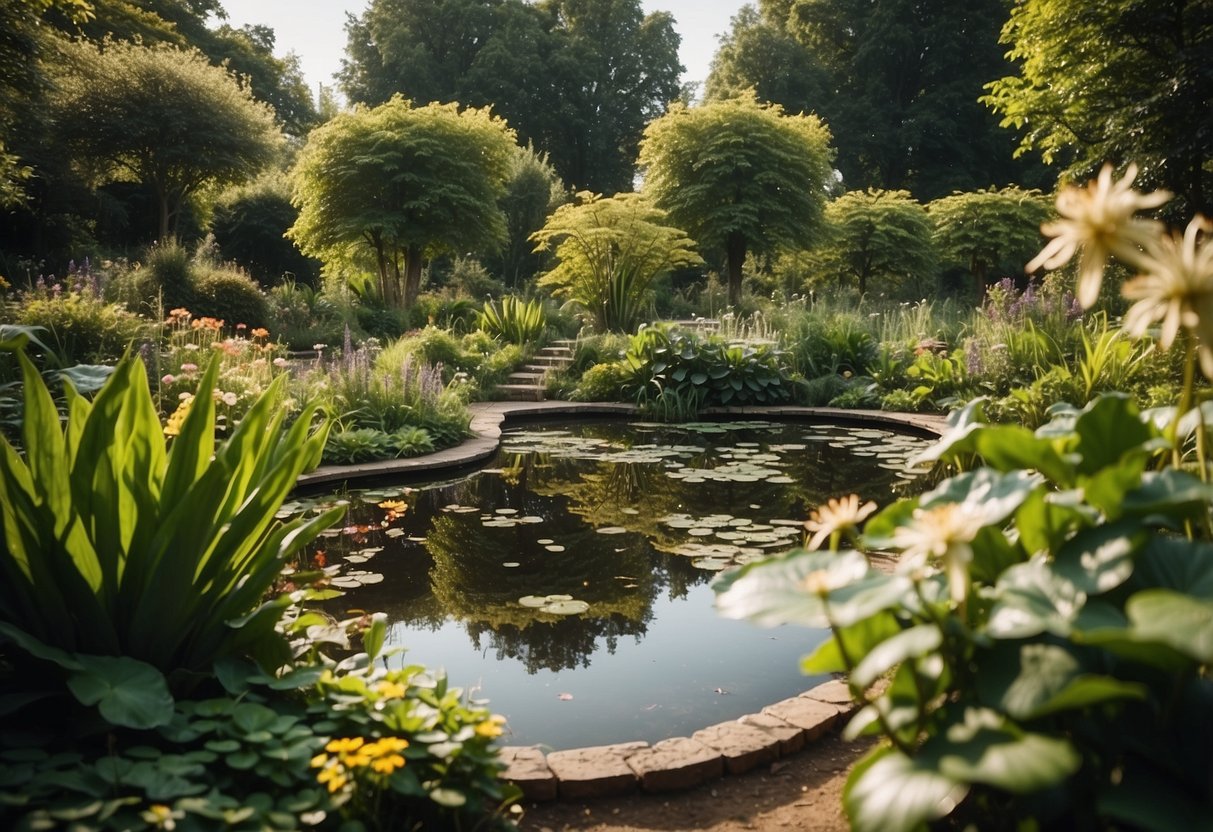
Installing a feeder station for your frogs and toads offers multiple advantages. It can help attract beneficial species, reduce pest populations, and create a wildlife-friendly garden.
Attracting Beneficial Species
Feeder stations can draw various helpful creatures to your garden.
By providing food for frogs and toads, you also attract other beneficial species like birds and insects. These species contribute to a balanced ecosystem.
Birds, for example, can help control insect populations and pollinate plants.
Frogs and toads are natural predators of many garden pests. Their presence indicates a thriving environment.
This draws other creatures, creating a more diverse habitat. Over time, you’ll notice an increase in biodiversity, which strengthens the overall health of your garden.
Reducing Pest Populations
Frogs and toads are effective pest controllers.
By providing a feeder station, you encourage them to stay in your garden.
These amphibians feed on insects like flies, mosquitoes, and beetles, which can be harmful to plants.
A consistent food source helps maintain a stable frog and toad population.
This reduces the need for chemical pesticides, which can harm plants and soil.
The natural predation by frogs and toads creates a safer, more sustainable environment for your plants to grow.
Creating a Wildlife-Friendly Garden
A well-maintained feeder station contributes to a wildlife-friendly garden.
It supports not just frogs and toads but other animals too.
By offering a consistent food supply, you create an inviting space for wildlife. This enhances the natural beauty and ecological value of your garden.
Such an environment promotes healthy plant growth and soil quality.
The presence of various animals helps in nutrient cycling and pest control.
A wildlife-friendly garden is also more resilient to environmental stresses like drought or disease, ensuring a healthier and more vibrant garden space.
Selecting the Right Location for Your Feeder Station
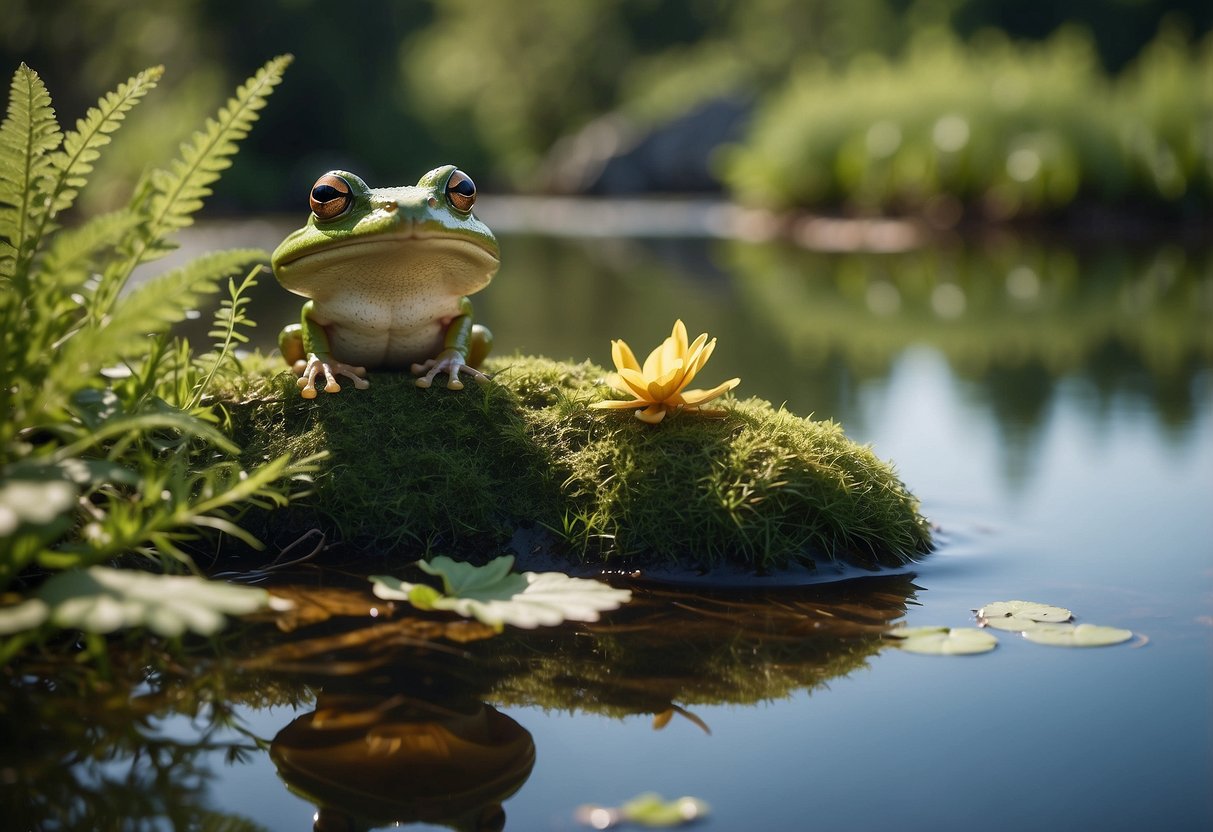
Location is key to creating a successful frog and toad feeder station.
First, choose a spot that is quiet and sheltered. Frogs and toads prefer areas with minimal disturbances.
Look for a place with plenty of moisture. These amphibians thrive in damp environments.
Near a pond, a shaded garden bed, or a marshy area would be ideal.
Ensure the location provides natural cover. Bushes, tall grasses, and rocks offer hiding spots for protection.
Place the feeder station away from busy human activity. This helps keep the environment stress-free for the frogs and toads.
Consider the following when choosing your location:
FactorImportant ConsiderationsProximity to waterMust be near a pond or water sourceNatural coverIncludes vegetation like bushes or rocksHuman activityShould be in a low-traffic areaSunlightMixed light and shade is best
Designing Your Frog and Toad Feeder Station
Creating a feeder station for frogs and toads involves gathering specific materials and tools and following a clear set of steps to construct it efficiently.
Materials and Tools Required
For a functional and durable feeder station, you will need the following materials:
- Clay pot (medium-sized)
- Drill and drill bits (suitable for ceramic)
- Silicone sealant (non-toxic)
- Small mesh screen (for drainage)
- Gravel or small rocks (for the base)
- Non-toxic paint (optional for decoration)
- Sandpaper (for smoothing edges)
Necessary tools include:
- Safety gloves
- Protective eyewear
- Markers
- Ruler
Gather these items before starting the construction to ensure a smooth process.
Step-by-Step Construction Guide
- Prepare the Clay Pot: Wet the clay pot to minimize dust. Using a marker, outline where you want the door and holes to be drilled.
- Drill the Door and Holes: Carefully drill the outlined door at a 45-degree angle to help create smoother edges. Drill additional smaller holes around the pot for ventilation and drainage. Wear safety gloves and protective eyewear for protection.
- Smooth the Edges: Use sandpaper to smooth the edges of the drilled areas. This step is crucial to avoid sharp edges that could harm the frogs or toads.
- Install the Mesh Screen: Cut the small mesh screen to fit the bottom of the pot. Secure it with non-toxic silicone sealant. This helps with drainage and keeps the feeder station dry.
- Add Gravel or Small Rocks: Place a layer of gravel or small rocks at the base of the pot. It ensures proper drainage and adds weight to the station, preventing it from tipping over.
- Painting and Decorating (Optional): If desired, paint the pot with non-toxic paint. Make sure it dries completely before placing it outside.
Choosing Suitable Food for Frogs and Toads
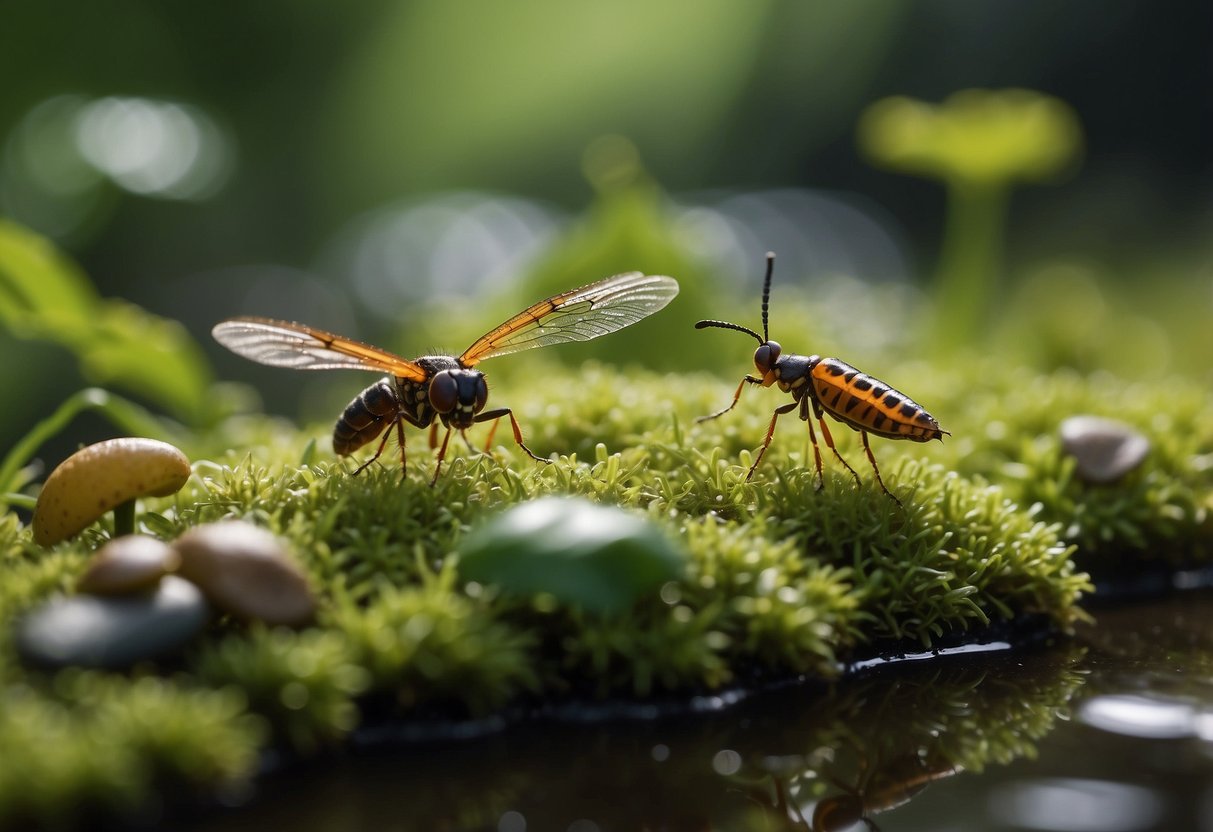
Feeding frogs and toads with the right food is essential for their health. Both natural prey and commercial feeds can be used, but some options are better depending on your pet’s needs.
Natural Prey
Frogs and toads thrive on a diet that mimics what they would find in the wild.
Common prey includes insects like crickets, mealworms, and flies. For larger species, such as African Bullfrogs, you may need to offer pinkie mice.
Insects are the mainstay of a frog’s diet. Crickets are a popular choice because they’re easy to find and nutritious.
Mealworms also provide essential nutrients but should be used in moderation to prevent obesity.
Flies and small moths can be a good addition. You can even add earthworms for variety.
It’s best to offer live prey, as the movement helps stimulate the feeding instincts of the frog or toad.
If your pet lives in an enclosure with a lot of water, take care to prevent insects from drowning. For example, you can place a small platform in the water to keep crickets safe.
Commercial Feeds
While natural prey is ideal, commercial feeds can also be a good option.
They often come in the form of pellets or dried insects. Some hobbyists prefer these because they’re convenient and readily available.
Pellets are designed to mimic the nutritional content of natural prey.
They come in various sizes to accommodate different frog species.
Dried insects, like crickets or mealworms, are another alternative but might not be as nutritious as live prey.
For frogs that need specific nutrients, you may find specialized feeds that include added vitamins and minerals.
When choosing commercial feeds, check the ingredients to ensure they meet the dietary needs of your frog or toad.
Using feeding tongs can help you offer the food safely, especially for aggressive species like Pacman Frogs.
This method keeps your fingers safe and ensures the frog gets the food directly.
Maintaining and Cleaning the Feeder Station
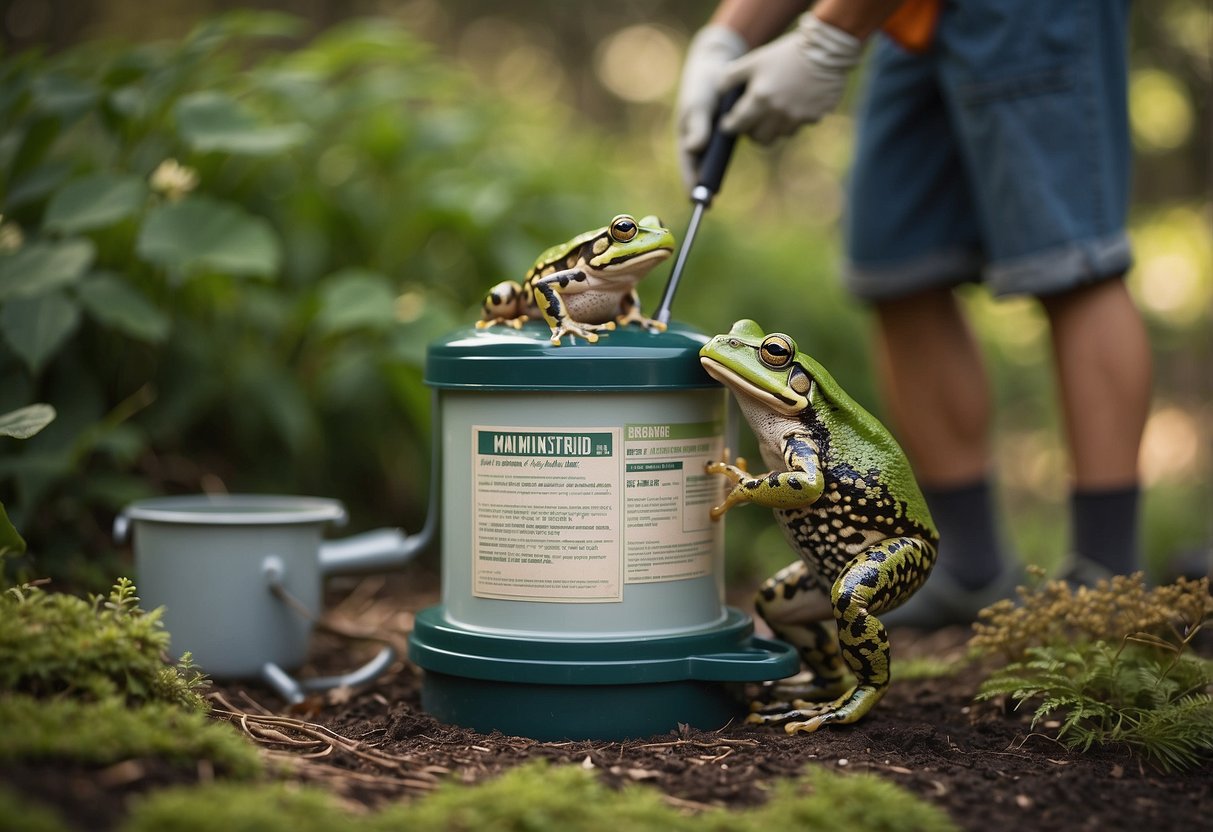
Regular maintenance is crucial to keep your frog and toad feeder station safe and hygienic.
Daily Care
- Remove uneaten food at the end of each day to avoid attracting pests.
- Check water features for cleanliness and refill as needed.
Weekly Cleaning
- Wash the feeder station with warm, soapy water.
- Rinse thoroughly to remove soap residue.
Monthly Deep Clean
- Disassemble the feeder station, if possible.
- Soak parts in a mixture of water and vinegar for 30 minutes.
- Use a brush to scrub away any stubborn dirt.
Here’s a simple cleaning routine to follow:
FrequencyTaskDailyRemove uneaten food, refill waterWeeklyWash with warm, soapy waterMonthlyDeep clean with water and vinegar
Pro Tips
- Use feeding tongs to place food inside the enclosure.
- This reduces mess and keeps the area cleaner.
- For enclosures with water, add a platform or rock to prevent crickets from drowning.
- It keeps the environment tidy for your frogs and toads.
Supplies Needed
- Warm, soapy water
- Vinegar
- Brush
- Feeding tongs
- Platform or rock for water features
Monitoring Frog and Toad Health and Safety
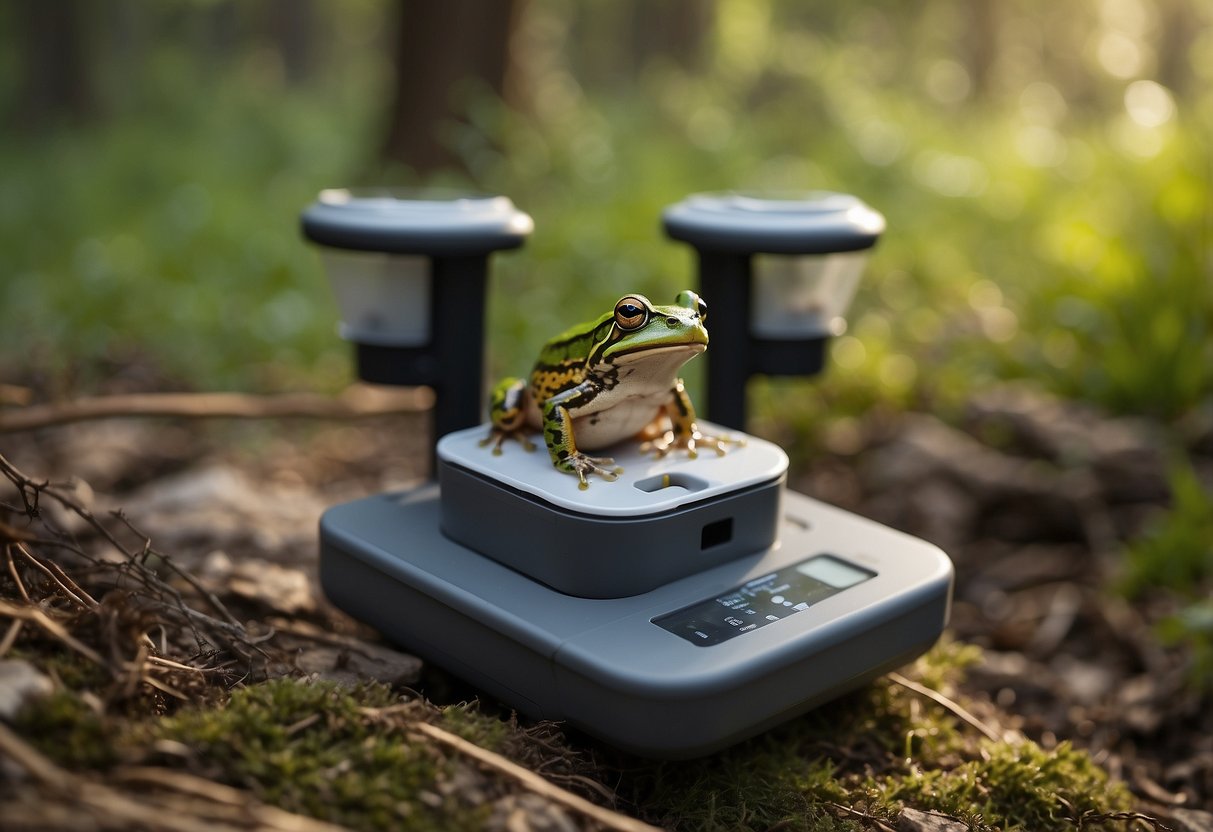
Effective monitoring of frog and toad health is essential.
Visual Checks
Regularly inspect your frogs and toads for any signs of illness.
Look for discoloration, abnormal swelling, and difficulty moving.
Healthy frogs should have clear eyes, smooth skin, and active behavior.
Habitat Conditions
Keep the environment clean. Check water quality regularly.
Ensure it’s free from chemicals and pollutants.
Frogs and toads are sensitive to changes in their habitat, so maintaining optimal living conditions is crucial.
Observation of Behavior
Watch for unusual behavior.
Frogs and toads that are lethargic or unresponsive may be sick.
Note any changes in feeding habits, as a decrease in appetite can indicate health problems.
Record Keeping
Maintain a simple log for each frog or toad.
Record their weight, size, and feeding patterns.
This will help you notice any changes over time, which can be early indicators of health issues.
External Help
If you notice any health concerns, consult a veterinarian who specializes in amphibians.
They can offer professional advice and treatment options.
Community Resources
Participate in local or online groups dedicated to amphibian care.
Websites like FrogWatch offer resources and community support for monitoring and reporting on amphibian populations.
Engaging Community and Educational Opportunities
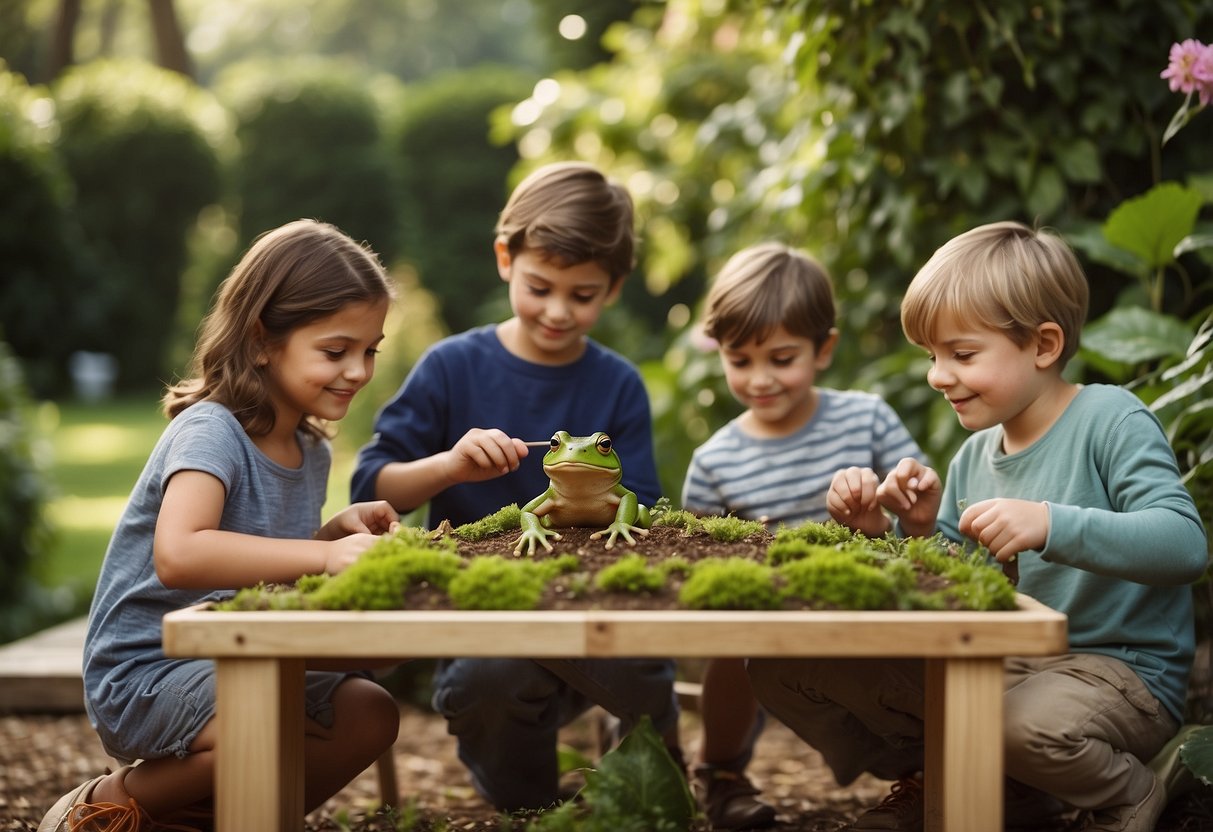
Creating frog and toad feeder stations can go beyond your backyard. You can engage your community and create educational experiences.
Host Workshops
Invite neighbors and friends for hands-on workshops.
Teach them how to build feeder stations and explain the benefits for local amphibians.
School Programs
Partner with local schools.
Set up sessions where students can learn about amphibians, their habitats, and how to care for them. This can be a fun science project.
Community Events
Participate in local events or farmers’ markets.
Set up a booth to display feeder stations and share information about creating frog-friendly spaces.
Volunteer Days
Organize volunteer days where community members can help build or set up feeder stations in public parks or communal gardens.
ActivityDescriptionWorkshopsHands-on building sessions with the community.School ProgramsEducational sessions for students.Community EventsParticipation in local fairs to spread awareness.Volunteer DaysGroup activities for building public stations.
Social Media Campaigns
Use social media platforms to share tips, photos, and videos on building and maintaining feeder stations.
Encourage followers to create their own and post their achievements.
Citizen Science Projects
Collaborate with organizations like FrogWatch USA.
Community members can record amphibian sightings and help in scientific research.
Frequently Asked Questions

Building and maintaining a feeder station for frogs and toads requires understanding what materials to use, their diet, and how to create a safe habitat. Below are detailed answers to common questions on these topics.
What materials are needed to build a frog and toad feeder station?
You will need basic items like untreated wood, nails, and non-toxic paint.
For feeding, use shallow dishes or trays. A small mesh can be handy to prevent larger predators from accessing the food.
What are the nutritional requirements for wild frogs and toads?
Wild frogs and toads need a diet high in protein, which they primarily get from insects like crickets and worms.
Additionally, calcium is essential for their bone health. Avoid feeding them fruits or vegetables, as they do not digest plant matter efficiently.
How can I create a safe and natural habitat for frogs and toads in my garden?
To create a safe habitat, provide water sources like ponds or shallow dishes.
Use native plants to offer natural shelter. Avoid pesticides as they can be harmful. Rocks and logs can provide cover and places to hide.
What are suitable food sources for captive frogs and toads?
Captive frogs and toads thrive on a diet of live insects such as crickets, mealworms, and small roaches.
Occasionally, you can offer them pinkie mice or fish for variety. Make sure to provide a calcium supplement to prevent metabolic bone disease.
How can you ensure continuous food supply in a feeder station for amphibians?
To maintain a continuous food supply, keep a stock of live insects and rotate their feeding schedule.
Consider raising your own insect cultures to have a regular source. Automated feeders can also help if you’re away for an extended period.
What design considerations are important for a DIY frog enclosure?
The design should include a water source, hiding spots, and climbing areas. Use non-toxic materials and ensure proper ventilation.
The enclosure should mimic their natural habitat to reduce stress and promote healthy behavior.
